Related Research Articles

Sir Edmund Andros was an English colonial administrator in British America. He was the governor of the Dominion of New England during most of its three-year existence. At other times, Andros served as governor of the provinces of New York, East and West Jersey, Virginia, and Maryland.

The Middle Colonies were a subset of the Thirteen Colonies in British America, located between the New England Colonies and the Southern Colonies. Along with the Chesapeake Colonies, this area now roughly makes up the Mid-Atlantic states.
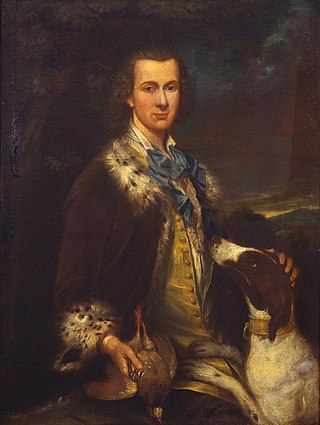
Thomas Dongan, 2nd Earl of Limerick, was a member of the Irish Parliament, Royalist military officer during the English Civil War, and Governor of the Province of New York. He is noted for having called the first representative legislature in New York, and for granting the province's Charter of Liberties. His negotiations and subsequent alliance with the Iroquois Indian Confederacy brought a lasting security from the French and their hostile Indian allies.
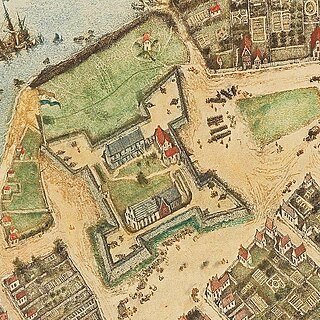
Fort Amsterdam was a fortification on the southern tip of Manhattan Island at the confluence of the Hudson and East rivers. The fort and the island were the center of trade and the administrative headquarters for the Dutch and then British/Colonial rule of the colony, of New Netherland and thereafter the Province of New York. The fort was the nucleus of the settlement on the island which was named New Amsterdam and eventually renamed New York by the English, and was central to much of New York's early history.

The Province of New York (1664–1776) was a British proprietary colony and later royal colony on the northeast coast of North America. Together with 12 other colonies, the Province of New York achieved independence following the American Revolutionary War, becoming a part of the newly-formed United States.
Cornwall County was a county of the former Province of New York, established on September 5, 1665 from 25,100 square miles (65,000 km2) of land that had been granted to the Duke of York in modern Maine. As established, the grant ran all the way from the St. Lawrence River to the Atlantic Ocean, between the Kennebec and St. Croix rivers, and produced what today is most of Aroostook, Piscataquis, Washington, Hancock, Penobscot, Waldo, Knox, Lincoln, Kennebec, Somerset, and Sagadahoc counties.

Gloucester County, New York is a former county in New York that became part of the state of Vermont. It was a part of Albany County in the Province of New York until 1770 and was lost to Vermont in 1777. At that time, Vermont was holding itself out as the Republic of Vermont and did not become a state until 1791.
In the United States, a patroon was a landholder with manorial rights to large tracts of land in the 17th century Dutch colony of New Netherland on the east coast of North America. Through the Charter of Freedoms and Exemptions of 1629, the Dutch West India Company first started to grant this title and land to some of its invested members. These inducements to foster colonization and settlement are the basis for the patroon system. By the end of the eighteenth century, virtually all of the American states had abolished primogeniture and entail; thus patroons and manors evolved into simply large estates subject to division and leases.

The Duke of York's Laws for the Government of the Colony of New York were a set of guidelines laid out during the early years of English rule in the Colony of New York.
Nicholas Bayard was a government official and slave trader in colonial New York. Bayard served as the mayor of New York City from 1685 to 1686. He is historically most notable for being Peter Stuyvesant's nephew and for being a prominent member of the Bayard family, which remained prominent in New York City history into the 20th century.
The towns and cities of Downstate New York were created by the U.S. state of New York as municipalities in order to give residents more direct say over local government. Present-day Westchester, Bronx, New York, Richmond, Kings, Queens, Nassau, and Suffolk counties were part of York Shire from 1664-August 1673 and again from February 1674 until 1683 at which point the Province of New York was divided into counties. From August 1673 to February 1674 New York was under Dutch control and English political units were suspended, then restored under English rule. York Shire was divided into three divisions called ridings, the East, West, and North ridings. In 1683 the colony of New York eliminated shires and ridings in favor of counties, the East Riding becoming Suffolk County, West Riding the counties of Richmond and Kings, while the North Riding became the counties of Westchester, New York, and Queens.

The towns and cities of the Hudson Valley were created by the U.S. state of New York as municipalities, in order to perform the services of local government. In 1683, prior to the creation of modern towns, the Province of New York was divided into twelve counties for administrative purposes by the Colonial Governor of New York. In the Hudson Valley, these divisions included Dutchess, Orange, and Ulster counties. Dutchess and Orange remained unorganized until 1713, with Dutchess administered from Ulster; Orange would be administered from New York County. Future counties would be formed and towns exchanged over time, with Rockland County split from Orange in 1799, at which time the southern towns of Ulster were transferred to Orange as compensation for the loss; and Putnam County from Dutchess in 1812, these county's towns can trace their origins to towns and precincts that were formed in their parent counties. Another change that occurred was the transfer of Dutchess County's northern section, the Livingston Manor, to Columbia County. Greene County was formed in 1800 by the combination of the southernmost towns of Albany County with the northernmost towns of Ulster. The history of the towns of Greene and Columbia counties can be found at the Timeline of town creation in New York's Capital District.
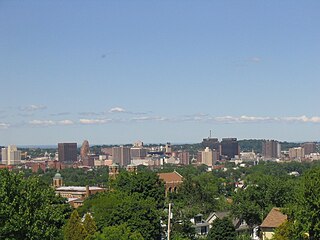
The towns and cities of Central New York were created by the U.S. state of New York as municipalities in order to give residents more direct say over local government. Central New York is a six county area–Cayuga, Herkimer, Madison, Oneida, Onondaga, and Oswego.
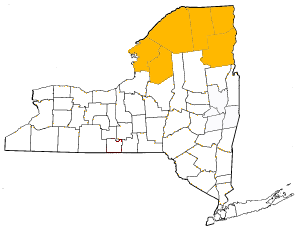
The towns and cities of New York's North Country were created by the U.S. state of New York as municipalities in order to give residents more direct say over local government. The North Country consists of Clinton County, Essex County, Franklin County, Jefferson County, Lewis County, and St. Lawrence County. When counties were first formed in 1683 the entire area was theoretically under the jurisdiction of Albany County though actually wilderness inhabited by Native Americans, by 1764 most of the area became effectively controlled by Albany County. The state would sell off this land to settlers and speculators, most notably as part of the Old Military Tract (1786) to veterans of the US Revolutionary War and as Macomb's Purchase (1791) to Alexander Macomb. In 1772 the northern and western portions of Albany County was divided into two counties– Tryon and Charlotte. Tryon encompassed Lewis, Jefferson, and St. Lawrence counties along with the western section of Franklin; Tryon was renamed Montgomery in 1784. Charlotte encompassed Clinton, Essex, and the majority of Franklin County; the name of the county was changed to Washington County in 1784. In 1788 Clinton County was split from Washington, Essex was formed from Clinton in 1799 and Franklin was formed from Clinton in 1808. Montgomery County's North Country area went to Herkimer County on that county's formation in 1791, but western Franklin and eastern St. Lawrence were returned to Montgomery in 1797. In 1798 Lewis, Jefferson, and western St. Lawrence became part of the newly formed Oneida County from Herkimer in 1798, leaving only central St. Lawrence County as part of Herkimer. In 1801 the future St. Lawrence and Franklin counties which were portions of Montgomery, Herkimer, and Oneida were transferred to Clinton County; the next year in 1802 St. Lawrence was formed as a county. In 1805 both Lewis and Jefferson counties were formed from Oneida County.
The history of Albany, New York from 1664 to 1784 begins with the English takeover of New Netherland and ends with the ratification of the Treaty of Paris by the Congress of the Confederation in 1784, ending the Revolutionary War.

During the American colonial era, the colonies of New York and Connecticut often disputed the precise location of their shared border, leading to a border dispute that eventually gave the colonies their modern shapes. Though the dispute was officially resolved in 1731, effects of the boundary conflict persisted until well after both colonies gained statehood as part of the United States following the American Revolution.
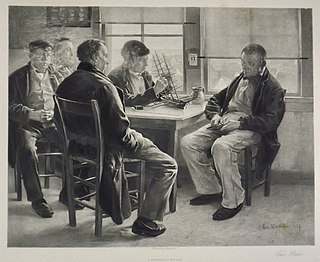
Sandy Hook Pilots are licensed maritime pilots that are members of the Sandy Hook Pilots Association for the Port of New York and New Jersey, the Hudson River, and Long Island Sound. Sandy Hook pilots guide oceangoing vessels, passenger liners, freighters, and tankers in and out of the harbor. The peninsulas of Sandy Hook, and Rockaway in Lower New York Bay define the southern entrance to the port at the Atlantic Ocean.
Thomas Penniston was a privateer who operated out of New England. He was known for sailing alongside Adrian Claver and Regnier Tongrelow.
References
- ↑ Flick, Alexander C., ed. History of the State of New York. 10 Volumes; New York City; Columbia University Press, 1933–1937; Volume 2; Page 80
- ↑ New York: Commissioners of Statutory Revision: Colonial Laws of New York from the year 1664 to the Revolution, including the Charters of the Duke of York, the Commissions and instructions to Colonial Governors, the Duke's Laws, the Laws of the Dongan and Leisler Assemblies, the Charters of Albany and New York, and the acts of the Colonial Legislatures from 1691 to 1775, inclusive. Report to the Assembly No. 107, 1894. Five Volumes. Albany, New York; 1894–1896. Volume 1; Page xi.
- ↑ Farnham, Mary Frances; Compiler. (1901–1902). Farnham Papers (1603–1688). Volumes 7 and 8 of Documentary History of the State of Maine. Portland, Maine: Collections of the Maine Historical Society, 2nd Series. Volume 7: Pages 311 and 314.
{{cite book}}: CS1 maint: multiple names: authors list (link) - ↑ Parry, Clive, ed. (1969–1981). Consolidated Treaty Series; 231 Volumes. Dobbs Ferry, New York: Oceana Publications. Volume 10: Page 231.
- 1 2 Parry, Clive, ed. (1969–1981). Consolidated Treaty Series; 231 Volumes. Dobbs Ferry, New York: Oceana Publications. Volume 13, Page 136.
- ↑ Williamson, William D. History of the State of Maine, from its First Discovery, A.D. 1602, to the Separation, A.D. 1820, Inclusive. 2 vols.; Hallowell, Maine; 1832. Vol. 1; P.446.
- ↑ Swindler, William F., Editor. Sources and Documents of United States Constitutions. 10 Volumes; Dobbs Ferry, New York; Oceana Publications, 1973–1979; Volume 4; Page 282.
- ↑ New York: Commissioners of Statutory Revision: Colonial Laws of New York from the year 1664 to the Revolution, including the Charters of the Duke of York, the Commissions and instructions to Colonial Governors, the Duke's Laws, the Laws of the Dongan and Leisler Assemblies, the Charters of Albany and New York, and the acts of the Colonial Legislatures from 1691 to 1775, inclusive. Report to the Assembly No. 107, 1894. Five Volumes. Albany, New York; 1894–1896. Chapter 4; Volume 1; Page 122